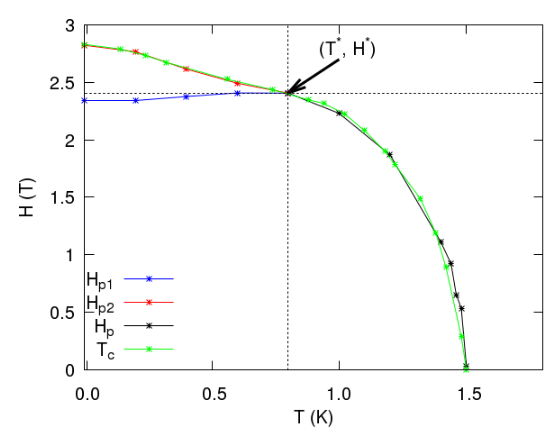
Since the discovery of superconductivity in Strontium Ruthenate 2-1-4 this has been one of the most intriguing unconventional superconductors. Initially the ruthenium-based perovskites drew attention because they have the same crystal structure as the copper-based high-temperature superconductors. The ruthenium-based materials do not superconduct at high temperatures, however the superconducting state of the 2-1-4 compound did turn out to be highly unconventional – so much so, indeed, that that after a quarter centruy or so of investigation even the nature of its superconducting ground state is still not agreed on. Specifically, several candidates for the symmetry of the Cooper pairs responsible for its superconductivity are still in play (compare this to the high-temperature superconductors where in spite of enduring puzzles to do with the electron pairing mechanism and other parts the phase diagram the question of the Cooper pair symmetry has been settled for decades). Our recent paper on this material [1] shows an intriguing new direction.
For many years a chiral triplet state has been favoured, as it provides a simple explanation of many experimental observations including the apparent breaking of time-reversal symmetry on cooling below the superconducting critical temperature. This led to many interesting proposals including a search for Majorana modes that could be used for topological quantum computing. Unfortunately there are increasing indications that not everything we know about this system is compatible with the chiral triplet pairing scenario. Here we look at an alternative, namely a helical triplet pairing state and find that it fits quite naturally with a number of experimental facts that are harder to reconcile with the standard approach [1].
Since the helical state does not break time-reversal symmetry the present work is definitely not the final word on the matter. Nevertheless, it points the field in an interesting new direction. The paper includes an outline of how the model could be improved to make it compatible with broken time-reversal symmetry, in a weak spin-orbit coupling limit (similar to how we understand this phenomenon in the non-unitary triplet superconductors LaNiC2 and LaNiGa2 [2]).
References
- Gupta, R., Saunderson, T., Shallcross, S., Gradhand, M., Quintanilla, J., Annett, J. (2020) Superconducting double transition and substantial Knight shift in Sr2RuO₄. Physical Review B: Condensed Matter and Materials Physics, 102 . Article Number 235203. ISSN 0163-1829. (doi:10.1103/PhysRevB.102.235203) (KAR id:84668)
- Quintanilla, Jorge, Hillier, Adrian D, Annett, James F, Cywinski, Robert (2010) Relativistic analysis of the pairing symmetry of the noncentrosymmetric superconductor LaNiC2. Physical Review B: Condensed Matter and Materials Physics, 82 (17). p. 174511. ISSN 0163-1829. (doi:10.1103/PhysRevB.82.174511) (KAR id:26055)